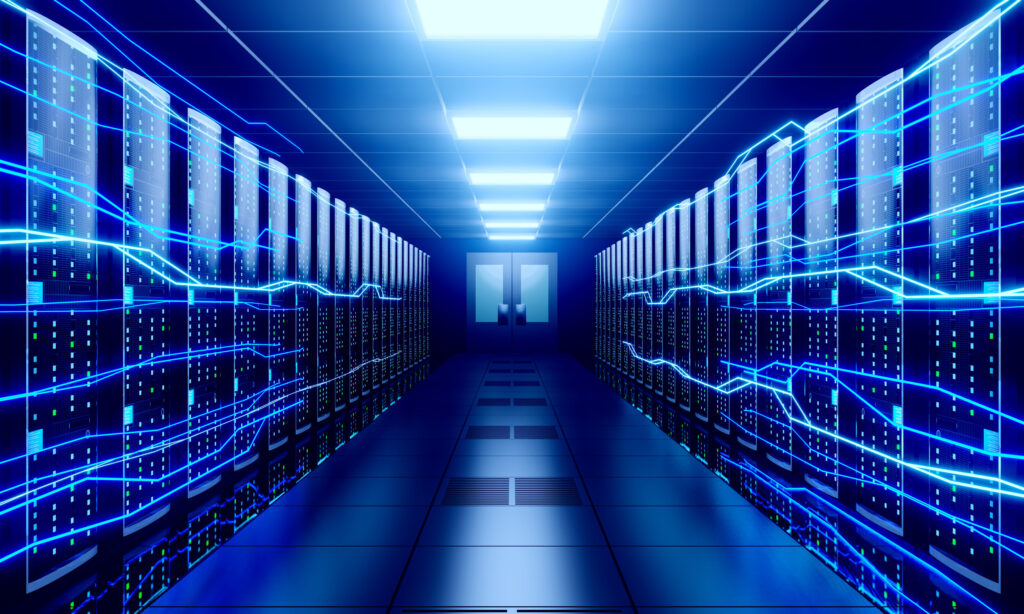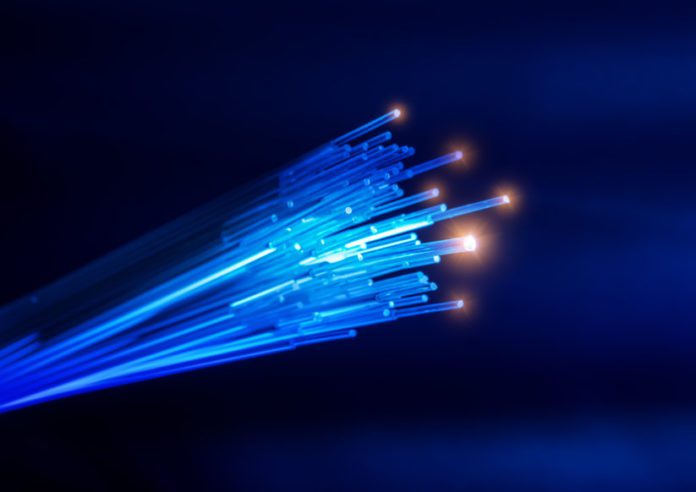Amid a boom in AI investments around servers and data centers, there are also signs that fiber infrastructure will need to have its capacity and capabilities upgraded in order to support AI traffic.
For insight on the impact that AI is expected to have on fiber infrastructure, we turn to Bill Long, chief product officer for telecom infrastructure provider Zayo. The company recently announced its intentions to build more than 5,000 fiber route-miles specifically to meet the demands of AI workloads, and said that the investment “will be critical to averting a potential bandwidth gap in the U.S. as AI-driven data center capacity is expected to grow 2-6X over the next five years.”
“Eighteen months ago, the standard dark fiber order was 8 to 12 fibers,” Long said. “Over the past 18 months, we started to see design requests, and actual orders coming in, for 144 fibers, 432 fibers—so a true order of magnitude increase.”
“Keeping pace with the next wave of AI growth will require new long-haul networks to enable the rapid scaling of capacity needs in both existing and emerging AI data center markets. In 2024, Zayo saw significant AI-driven demand for long-haul routes, including more than $1 billion in AI-related deals and an additional $3 billion in pipeline. This demand shows no signs of letting up,” said Steve Smith, CEO at Zayo. “As the complexity of long-haul builds continues to be prohibitive to many providers, Zayo remains the only company building long-haul routes at scale to lead this next phase of infrastructure growth.”
Zayo plans to build out five new routes and add over-builds of seven existing routes over the next five years, totaling about 5,000 new route-miles of fiber transport specifically to meet anticipated demand driven by increased AI use. Those new routes, the company said, will enable “direct, low-latency, and scalable paths between key data center hubs and forecasted growth areas.”
How did Zayo choose the routes? As those large fiber orders started rolling in, Zayo partnered with an external firm to do a top-down and bottoms-up analysis to determine whether the AI-driven demand was temporary or likely to be sustained over the long-term. That included asking its customers about AI use and estimating bandwidth needs, but also looking at information from chip manufacturer TSMC’s fabs on the flow of chips coming into the market over the next five years, and where they were likely to be used, given constraints on power.
Those chips “have to live in data centers somewhere, and if you look at the constraint right now with data centers is power … if you understands the constraints on where the power is, then you can understand where the data centers are going to be placed, and then you can model for the types of chips that are going into these data centers, what’s the implied bandwidth,” Long explained.
That allowed Zayo to work backwards and get a pretty good idea of the aggregate level demand, the locations where the demand is going to be, and the amount of bandwidth that will be driven. And the overall outlook signaled a major mis-match in fiber transport and long-haul demand versus supply.
“We looked at that amount of demand, compared to the amount of capacity that was in the ground, and we were like, ‘There’s a problem here,'” Long said.
Zayo’s planned new routes include: Columbus, Ohio to Indianapolis; Chicago to Columbus; Las Vegas to Reno, Nevada; Atlanta, Georgia to Ashburn, Virginia; and Minneapolis to Chicago.
The company also plans to do overbuilds of seven key existing routes: Denver, Colorado to Dallas, Texas; Denver to Omaha, Neb. to Chicago; Denver to Salt Lake City; Salt Lake City to Reno; Dallas to Atlanta; Columbus to Ashburn; and Phoenix to Tucson, Arizona. (See more details from Zayo here.)
The announcement of the specific routes was the culmination of Zayo getting more confident in aggregate demand, Long said, plus its commitment to make sure that when the market demand is there, the company can meet it in the right locations. He pointed out the example of the Chicago to Columbus route. “Columbus is a really big emerging data center market,” he said. “But it’s not just Columbus—it’s the locations along the span from Chicago to Columbus that we’re confident there’s going to be a lot of demand.”
In the continental U.S., Long said, there was a “huge glut” of fiber builds around around 2000, such that Zayo has been the only company that has been building long-haul fiber infrastructure at scale in the past decade even as hyperscaler demands for three and four fiber paths escalated over time, to ensure data center resilience. “The whole industry has been living off that glut of fiber that was laid in 2000,” Long said, and so building out long-haul infrastructure has become a “dying art.”
“It is a very school of hard knocks kind of business to be in,” he reflected. “The industry has not deployed this level of fiber at scale in two decades. So the whole industry is going to have to learn.”
Reflecting on the possibility of new entrants to the fiber infrastructure business, Long said that he does think that the level of demand will prompt some new players to try it out. “It is a very hard business. The landscape is riddled with a lot of folks who have tried to be in the fiber, and especially the long-haul business,” he said—Zayo itself, after all, is made up of dozens of acquisitions of smaller fiber infrastructure companies, assembled in the 20002. “It’s going to be interesting to see how the new entrants come in and how they try to play,” he said.
Anticipating AI traffic needs for fiber infrastructure: Training vs. inference
Zayo thinks that the use cases and traffic for training will be quite different than inference, Long said. Training is likely to be concentrated in places with plentiful power, such as West Texas, since power is such a limiting constraint on AI data centers.
However, Long went on, “We actually think that inference, over time, is going to be a larger driver of bandwidth. That includes both data-center-to-data-center to enable inference, but also data-center-to-consumer.”

He offers up the example of Uber: If you’re using the app to call a ride, the amount of bandwidth required to send the request is relatively small. But once your request hits an Uber server, there are multiple back-end queries to support and complete that request: Google queries to get the maps and update them in real-time, queries to Visa to process the payment, and so on.
“There’s a ton of back-end data center to data center interaction, and we think inference is going to look a lot like that,” Long said. “So we think it’ll drive a ton of metro communications needed, both within the metro and connecting between data centers in the metro, and connecting out to end users.”
Locating data centers and fiber infrastructure for AI: Decision factors
There are three major factors contributing to the selection of data center locations, Long explains: Near population-dense areas where there was significant demand; connectivity options, or having multiple fiber networks available in order to satisfy route-redundancy requirements; and inexpensive power.
However, those factors used to weighted about equally in their relative importance. Now, there is sufficient demand across a number of smaller, mid-tier markets. Fiber connectivity has proliferated such as that it’s more likely that a data center can be connected even in relatively remote areas. But power is the limiting factor and the scarcest resource, meaning that it has become the highest priority when locating data centers.
AI already faces a number of infrastructure crunches: Chip availability, data center availability and power. “I think power is going to be the harder one to solve,” Long said. He said that in comparing the cost of bulk fiber infrastructure builds to the cost of electric power transmission, it’s four to 10 times more expensive to build transmission lines than fiber.
“That means that … if you geo-optimize your infrastructure, it’s much cheaper to bring the bandwidth to the power, than the power to the bandwidth,” Long said.
As Zayo chose its routes, it carefully took power sources along the corridor into consideration, and the fact that when data center operators are trying to decide between connectivity vs. power transmission, the expense of transmission will mean that they will solve the conundrums with fiber transport rather than new transmission routes—meaning that its existing long-haul networks are a key differentiator for the company, and that its careful selection of new and over-build corridors for fiber infrastructure will meet the demands of AI as adoption rises.

